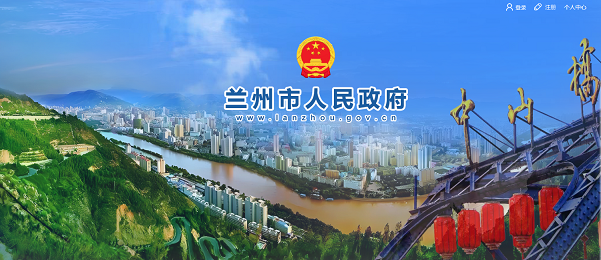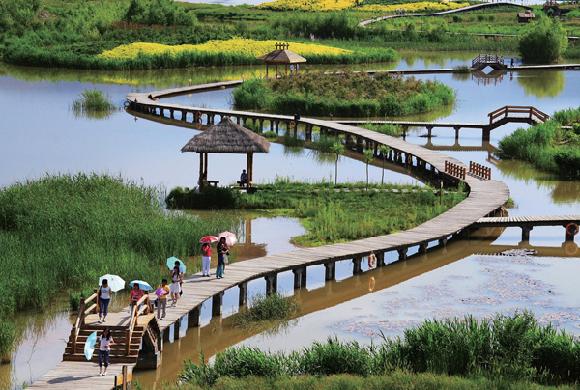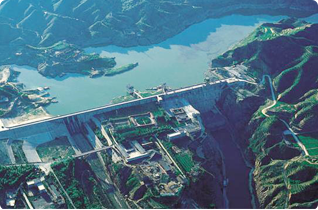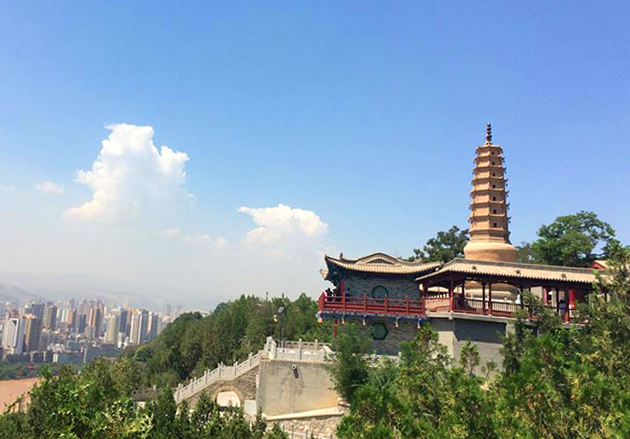- Profile Jurisdictions GOV DEPARTMENTS Cultures Travelling Educate
-
Lanzhou, the capital of Gansu Province, stands as a pivotal central city in the western region, a comprehensive national transport hub, a base for advanced manufacturing in Northwest China, and a regional stronghold for technological innovation. It currently administers five districts—Chengguan, Qilihe, Xigu, Anning, and Honggu—alongside three counties: Yongdeng, Yuzhong, and Gaolan. The city encompasses one national-level new area—Lanzhou New Area—and two national-level development zones—Lanzhou High-Tech Development Zone and Lanzhou Economic and Technological Development Zone. The city's total area spans 13,100 square kilometres. By the end of 2024, the city's permanent resident population stood at 4.4365 million. Lanzhou has been honoured with titles including ‘National Civilised City’, ‘National Garden City’, ‘Business Environment Innovation City’, ‘China Investment Hotspot City’, ‘National Model City for Social Credit System Development’, and ‘National Model City for Food Safety’. Since the 18th National Congress of the Communist Party of China, General Secretary Xi Jinping has visited Lanzhou on three occasions, expressing heartfelt hopes that ‘the banks of the Yellow River are also beautiful’ and ‘the Yellow River is beautiful and will be even more beautiful in the future.’ These words have provided fundamental guidance, charted the course forward, and injected powerful momentum for Lanzhou's endeavours on the new journey and its contributions in the new era. In recent years, the entire city has thoroughly studied and implemented Xi Jinping Thought on Socialism with Chinese Characteristics for a New Era, earnestly carried out the spirit of General Secretary Xi Jinping's important speeches and directives during his inspection tours of Gansu and Lanzhou. Anchored by the overarching goals of advancing the Strong Provincial Capital Initiative and building a beautiful Lanzhou for the new era, the city has comprehensively activated the ‘three major drivers’ of reform, opening-up, and innovation in accordance with the 1139 work plan. It has vigorously promoted the ‘dual advancement and dual production’ of projects, deeply implemented the comprehensive transportation campaign, and taken multiple measures to win the battle for improving the business environment. The city's economic strength, developmental vitality, and comprehensive competitiveness have significantly enhanced.

Lanzhou stands as a time-honoured jewel along the Silk Road. Since antiquity, it has served as a pivotal transport hub and strategic military stronghold, ‘connecting four regions and spanning ten thousand li.’ During the Qin Dynasty, Yuzhong County was established here; in the Western Han Dynasty, Jincheng County was founded; and in the Eastern Han Dynasty, Jincheng Commandery was administered. The Western Qin Kingdom of the Sixteen Kingdoms period once made Lanzhou its capital. The renowned Western Han general Huo Qubing twice crossed the Yellow River from Lanzhou to launch northern campaigns against the Xiongnu, incorporating the Hexi Corridor into the Central Plains dynasty's territory. Li Xi constructed fortifications in present-day Xigu District, naming it Jincheng to signify its impregnable defences. During the Sui Dynasty, Jincheng Commandery was renamed Lanzhou and a military governor's office was established, giving rise to the city's name. In the Ming Dynasty, Prince Su relocated his fiefdom to Lanzhou. In the early Qing dynasty, Shaanxi and Gansu were administered separately, with Lanzhou serving as the provincial capital of Gansu. By the mid-Qing period, the Shaanxi-Gansu Governor-General relocated to Lanzhou, establishing it as the political, military, and cultural hub of Northwest China. As early as 2000 years ago, Zhang Qian of the Western Han Dynasty passed through Lanzhou on his mission to the Western Regions, pioneering the Silk Road that traversed the Eurasian continent and linked East and West. This transformed Lanzhou into a vital transport artery and commercial hub along the Silk Road, playing a pivotal role in facilitating economic and cultural exchange between China and the West.

Lanzhou is a uniquely captivating city on the Yellow River. The Yellow River, the mother river of the Chinese nation, flows through the city, traversing 150.7 kilometres within its municipal boundaries, including 47.5 kilometres through the urban area. This creates a distinctive urban landscape characterised by ‘two mountains facing each other, with the great river flowing between them,’ endowing the city with a unique charm, blessed with mountains and water. The water wheels built along the river are renowned alongside Dutch windmills; Zhongshan Iron Bridge, the first iron bridge spanning the Yellow River, is hailed as ‘the foremost bridge across the Yellow River’; the Yellow River Mother sculpture has become a symbol of Yellow River culture and the motherly image of the Chinese nation, ranking among China's most beautiful urban sculptures; Lanzhou beef noodles are celebrated as ‘China's premier noodles’. Particularly in recent years, Lanzhou has comprehensively implemented the national strategy for the Yellow River, elevating ecological conservation to new heights. In 2024, the city achieved an 82.2% rate of excellent air quality, while the water quality at national and provincial monitoring sections along the Lanzhou stretch of the Yellow River has maintained 100% compliance for consecutive years. Outflow sections consistently meet Class II standards. The city is vigorously advancing climate finance pilot initiatives and ‘waste-free city’ development, alongside comprehensive implementation of major ecological projects such as the sixth phase of the Three-North Shelterbelt Forest Programme. A beautiful panorama unfolds: Lanzhou's blue skies, the city's verdant landscapes, and the clear waters of the Yellow River. with the ‘Green and Beautiful Lanzhou’ theme becoming ever more pronounced and vibrant.

Lanzhou stands as a pivotal transport hub connecting six major networks. Situated at the crossroads of Northwest China, it ranks among the nation's nine major logistics regions, ten key logistics corridors, and twenty-one national logistics node cities. It serves as a strategic gateway for the New Eurasian Land Bridge and China's opening-up to Central, West, and South Asia. Major railways including the Longhai, Lanxin, Lanqing, Lanyu, and Baolan lines converge here, alongside national expressways such as the Beijing-Lhasa, Lianyungang-Horgos, Urumqi-Maoming, Qinghai-Lanzhou, and Lanzhou-Haikou routes. Lanzhou North Railway Marshalling Yard stands as the largest regional marshalling facility in China's west. The completion of the Baoji-Lanzhou Passenger Dedicated Line, Lanzhou-Chongqing Railway, and Central Lanzhou Passenger Dedicated Line has further established rapid transport links between Lanzhou and central-eastern regions as well as the Greater Southwest, positioning the city as a pivotal crossroads connecting the Belt and Road. In recent years, Lanzhou has secured approval to develop a land port-type national logistics hub, been designated a national strategic hub city for modern circulation and a backbone cold chain logistics base, while Gansu (Lanzhou) International Land Port has been recognised as a national model logistics park and repeatedly honoured as a national outstanding logistics park. Notably, the vigorous promotion of the Comprehensive Transport Campaign and the Smooth Travel in Lanzhou Initiative has accelerated the construction of a large number of transport infrastructure projects. Key projects such as the third phase expansion of Zhongchuan Airport, the Lanzhou-Zhangye Railway (Lanzhou-Wuwei section), the Lanzhou-Aziqi Highway, the Baitashan Tunnel, and the upgrade of the railway station forecourt have been completed and put into operation. The integration of Rail Transit Lines 1 and 2 into the network has accelerated the construction of a multi-dimensional, green, and intelligent transport network that is both externally connected and internally efficient.

Lanzhou stands as an industrial base of profound historical significance. As one of China's earliest cities to engage with industrial civilisation, it pioneered national manufacturing during the late Qing dynasty under Zuo Zongtang's administration of Gansu. His Westernisation initiatives established the Lanzhou Manufacturing Bureau and Gansu Woolen Weaving Bureau, marking the dawn of industrial development nationwide. Following the founding of the People's Republic, Lanzhou was designated a key industrial base. During the First, Second Five-Year Plans and the Third Front Construction period, major enterprises such as Lanzhou Refinery and Lanzhou Chemical were established, earning the city the title of ‘Firstborn Son of the Republic.’ It evolved into a vital national hub for petrochemicals, equipment manufacturing, biopharmaceuticals, and new materials. In recent years, Lanzhou has focused on building a ‘3+2’ modern industrial system and a ‘6+X’ advanced manufacturing industrial cluster. It has vigorously advanced initiatives to strengthen industry and technology, solidifying its industrial foundations and accelerating the renewal of its industrial structure. Approved by the provincial government, the Xigu Chemical Industrial Park has been established to develop one million tonnes of ethylene and one million tonnes of new materials. It actively attracts associated supporting industries while simultaneously expanding and strengthening the Lanzhou New Area Fine Chemicals Industrial Park, extending the high-quality development of the petrochemical industry. Leveraging key enterprises such as Lanzhou Machinery Group, Lanke Petrochemical, CRRC Lanzhou Locomotive Works, and Lanzhou High-Pressure Valve Factory, the city has developed a portfolio of flagship products in petroleum drilling machinery, refining and chemical processing equipment, locomotive manufacturing and repair, and high-pressure valves. Leveraging biological product enterprises such as Lanzhou Institute of Biological Products and Lanzhou Veterinary Research Institute, the city vigorously develops the biomedicine industry. Independent innovations like African swine fever vaccines are accelerating industrialisation, with three projects—including the creation and application of recombinant inactivated foot-and-mouth disease vaccines for pigs—awarded the Second Prize of the National Science and Technology Award. Production technologies and output for certain human vaccines, such as meningitis and measles vaccines, rank among the nation's leading positions; Leveraging renowned enterprises such as Fangda Carbon, Lanzhou Defu, and Jinchuan Group, emerging industries including carbon new materials, high-end copper foil new materials, and lithium iron phosphate cathode/anode materials have been cultivated and strengthened. By 2024, Lanzhou boasted 586 industrial enterprises above designated size, spanning 33 major industry categories and 99 medium-level industry categories, with the overall strength and market competitiveness of its industrial economy further enhanced.

Lanzhou is a renowned city of science, education, and innovation. As a vital national base for scientific research and education, it hosts 139 research institutions—including Lanzhou University, the Lanzhou Branch of the Chinese Academy of Sciences, military-industrial enterprises, and central state-owned enterprises—collectively termed the ‘New Four Armies.’ The city is home to over 1,200 research institutions, 31 higher education institutions, one national laboratory (represented by the Heavy Ion Accelerator), 12 national key laboratories, and seven state laboratories. It hosts 10 national-level enterprise technology centres, 3 national engineering research centres, and is home to 42 academicians from the Chinese Academy of Sciences and Chinese Academy of Engineering. In 2014, with approval from the Ministry of Science and Technology, it launched the pilot project for the Lanzhou-Baiyin Science and Technology Innovation Reform Pilot Zone. By 2018, it had become China's 19th National Independent Innovation Demonstration Zone. In 2019, Lanzhou joined the ranks of national innovation cities, with its national ranking as an innovation hub steadily improving. In recent years, it has established the Lanzhou-Baiyin Zhangjiang Science and Technology Innovation Enclave and the Kunpeng Ecosystem Innovation Centre, while operating the Lanzhou Intellectual Property Transfer and Trading Centre, the Overseas Chinese Scholars Association Northwest Innovation Centre, and the Gansu Research Institute of Shandong University. By 2024, the city's R&D intensity reached 2.43% of GDP, with a comprehensive scientific and technological progress index of 82.6%. Lanzhou ranked 80th among the world's top 100 science and technology clusters, demonstrating sustained vitality in social innovation and creativity.
Lanzhou serves as a gateway facilitating both internal and external connectivity. As a pivotal node along the Silk Road Economic Belt, it functions as a strategic bridgehead for China's westward and southward opening-up. The city hosts diverse open platforms including an international airport, international land port, comprehensive bonded zone, and cross-border e-commerce pilot zone. Regular international freight trains operate along the China-Europe, China-Central Asia, China-South Asia, China-Kyrgyzstan-Uzbekistan, the Longhai Corridor, and the Western Land-Sea New Channel. The national-level internet backbone direct connection point in Lanzhou has commenced operations, and a new scheduled freight train service for commercial vehicles from Dongchuan in Lanzhou to Khorgos has been launched. The city is actively developing into a national comprehensive freight hub to strengthen industrial chains, continuously enhancing its capacity for opening up. It has evolved from an inland hinterland into a frontier stronghold and vital gateway for China's opening up to the world. In recent years, the city has deeply integrated into the high-quality Belt and Road Initiative and the Western Land-Sea New Channel construction. It has continuously deepened regional coordination and international cooperation, signing strategic agreements on ecological development with cities like Xining to form the Lanzhou-Xining Urban Cluster. Framework agreements for coordinated regional development under the ‘One Core, Three Belts’ model have been signed with cities including Baiyin. Close economic and trade exchanges, along with industrial capacity cooperation, have been established with neighbouring countries and regions. Since 2024, it has established sister-city relationships with international cities including Samarkand in Uzbekistan, East Sarajevo in Bosnia and Herzegovina, and Isfahan in Iran, steadily expanding Lanzhou's international network.
Lanzhou stands as a cultural and tourism destination where diverse traditions converge. With over 2,200 years of urban history, the city harmoniously blends the enduring cultures of the Yellow River, the Silk Road, the Central Plains, and the Western Regions. Treasures such as the Wensu Pavilion's Complete Library of the Four Treasuries, the Song Dynasty edition of the Chunhua Pavilion Calligraphy Collection, and the Song Dynasty woodblock print of the Han Jun are exceptionally rare and precious editions in historical bibliographies. The Taiping Drum, High Stilts, Yellow River Waterwheel Craftsmanship, and Lanzhou Drum Ballads are all listed as national intangible cultural heritage protection projects. The ten-thousand-mu pear orchard in Shichuan Town holds the Guinness World Record for the ‘World's Largest Ancient Pear Orchard,’ while Liancheng, Qingcheng, and Jinya are nationally designated historical and cultural towns. Reader magazine, hailed as ‘the spiritual read for the Chinese people,’ holds the distinction of being ‘China's premier periodical brand.’ The children's play Soybean Ballad won the 7th Red Plum Award, while the musical Flying Apsaras received the Five Ones Project Award. National stage masterpieces such as Silk Road Flower Rain and The Great Dream of Dunhuang have written new chapters in ‘Cultural Lanzhou.’ Lanzhou experiences a temperate continental climate with an annual average temperature of 10.9°C. Summers are mild without extreme heat, and winters are mild without severe cold, making it a renowned summer retreat. It boasts four national forest parks including Xinglong Mountain and Tulu Gorge, alongside 38 distinctive tourist attractions such as Wushan Mountain, White Pagoda Hill, Shifogou, the Lutuzi Yamen, Qingcheng Ancient Town, and the Yellow River Tower. In recent years, the cultural and tourism industry has flourished, with attractions undergoing upgrades. Ink-wash Danxia was designated a National Cultural Industry Demonstration Base, while Hekou Ancient Town earned recognition as a National Tourist Leisure Street. Jinchengguan Scenic Area successfully attained 4A-level status and is now striving to become a 5A-level ‘Lighthouse’ attraction. Night-time economy, performing arts economy, and exhibition economy continue to invigorate Lanzhou's vibrant atmosphere. The Yellow River Grand Chorus, Lanshan Mountain panoramic views, and night cruises on the Yellow River are highly favoured. The Lanzhou Marathon ignites passion, while visitor numbers during the May Day and National Day Golden Weeks have reached record highs. In 2024, Lanzhou welcomed over 110 million visitors, achieving a historic breakthrough and significantly enhancing the city's cultural tourism influence and reputation.
contact details
Tel:00-86-0931- 8833501
Address:No. 637, Nanbinhe East Road, Chengguan District, Lanzhou City, China
Working hours:Weekdays: 8:30-12:00 14:30-18:00
